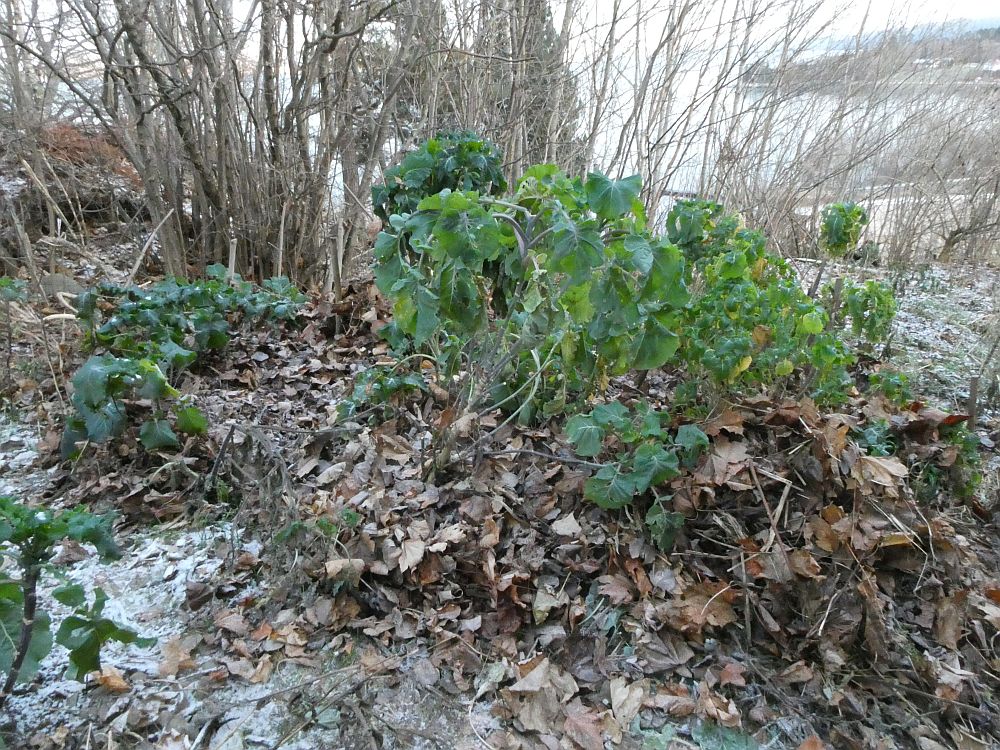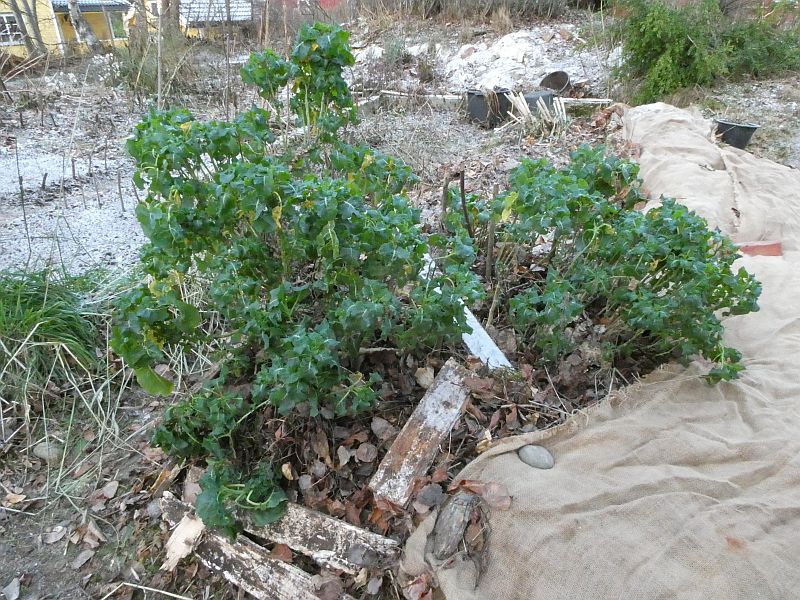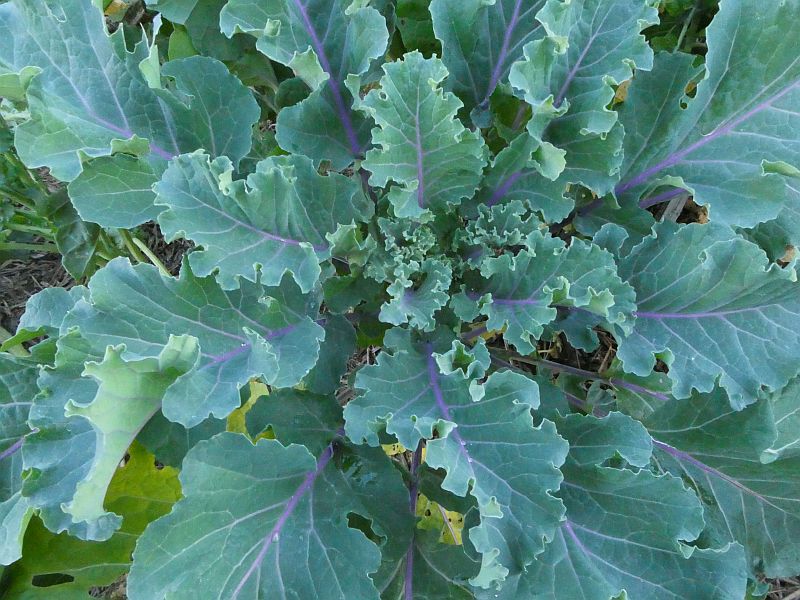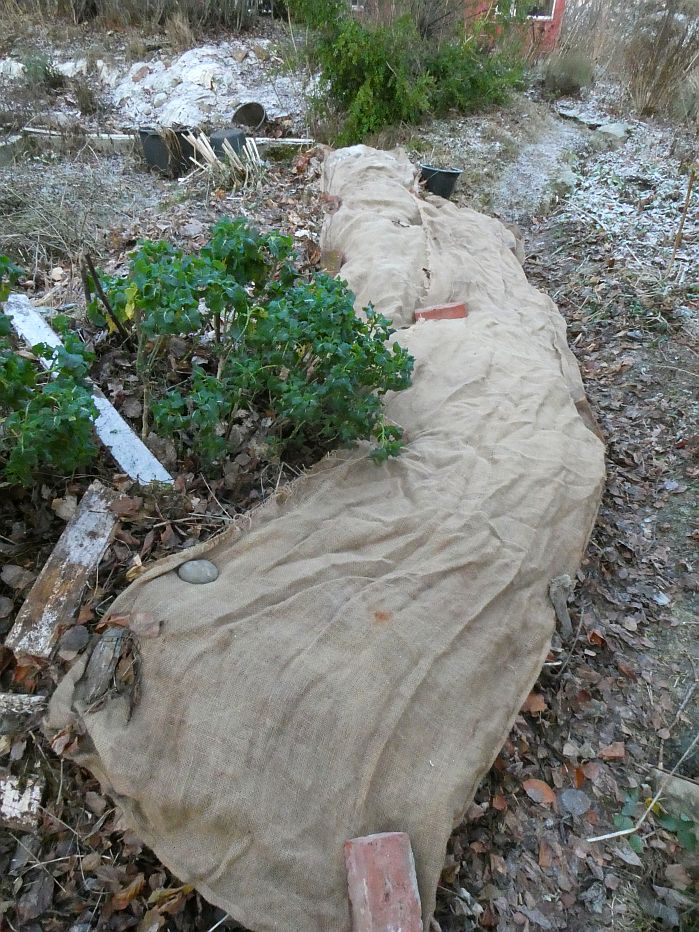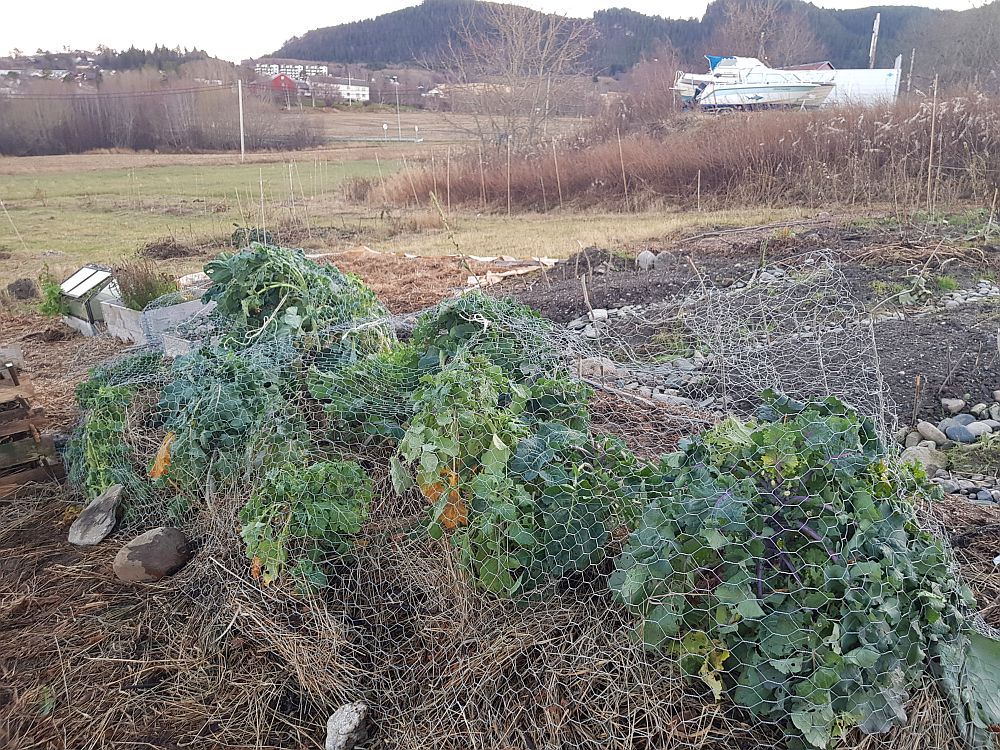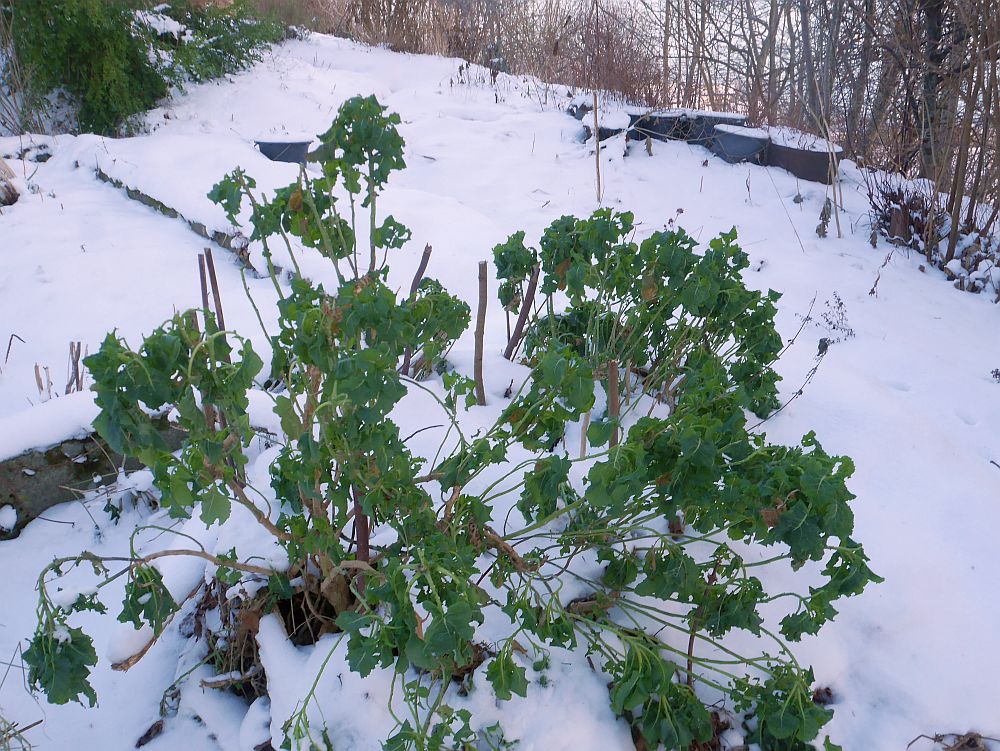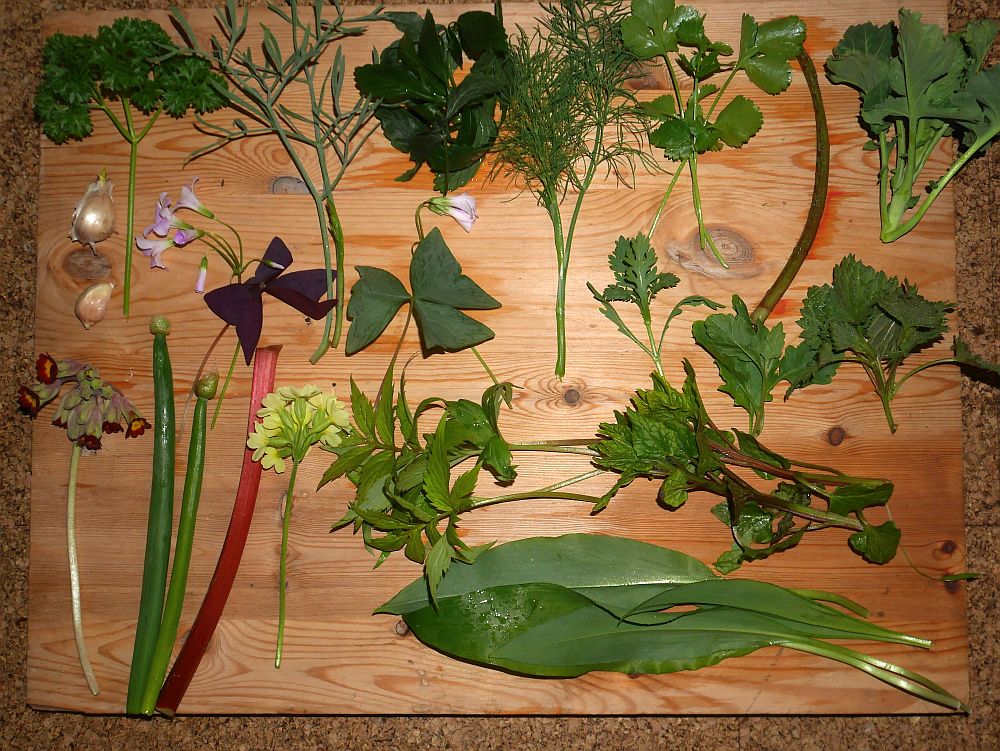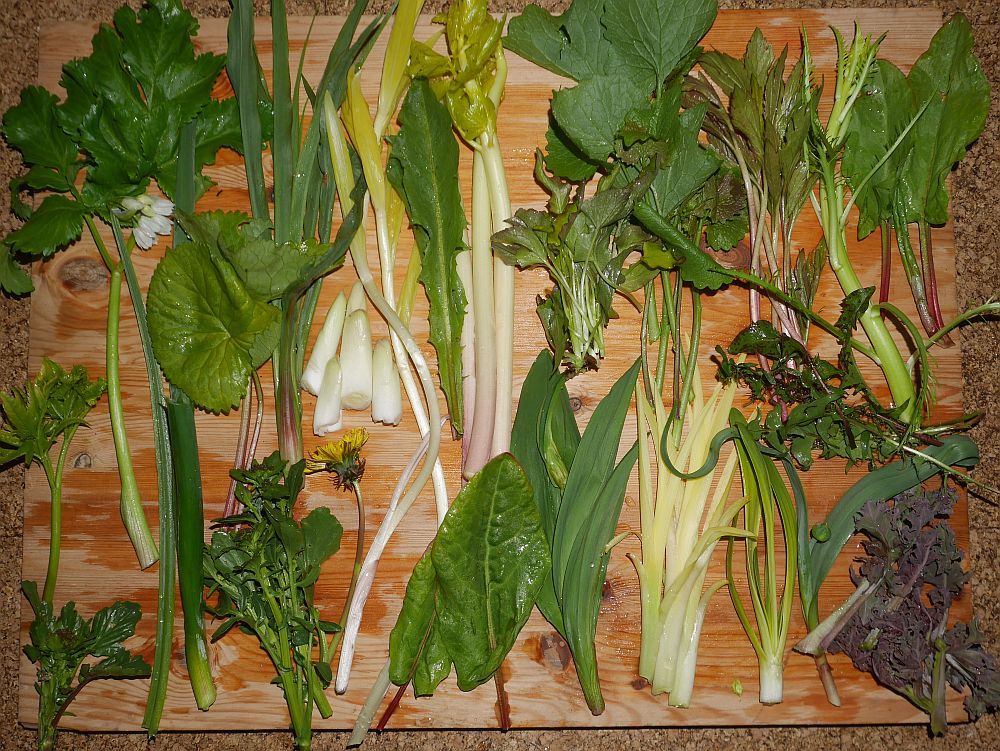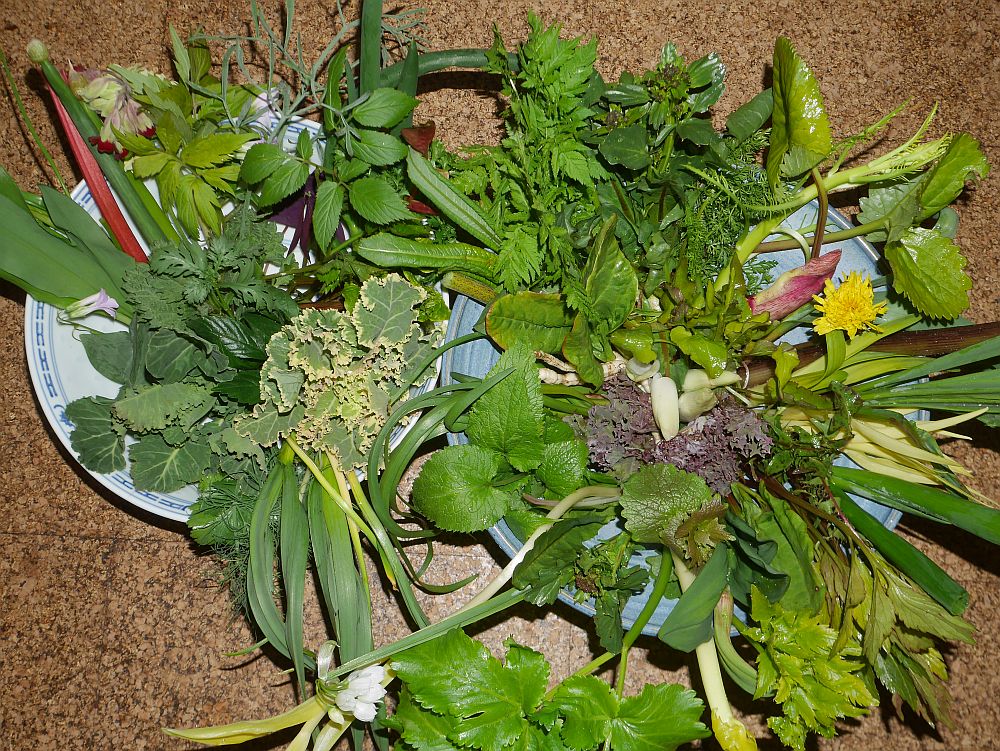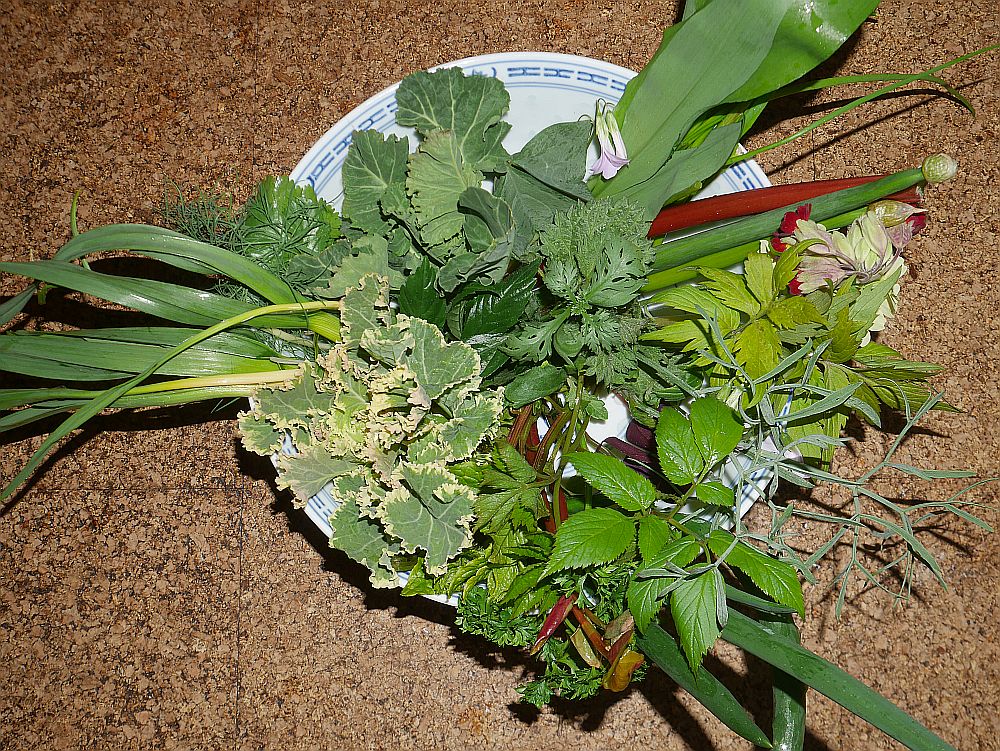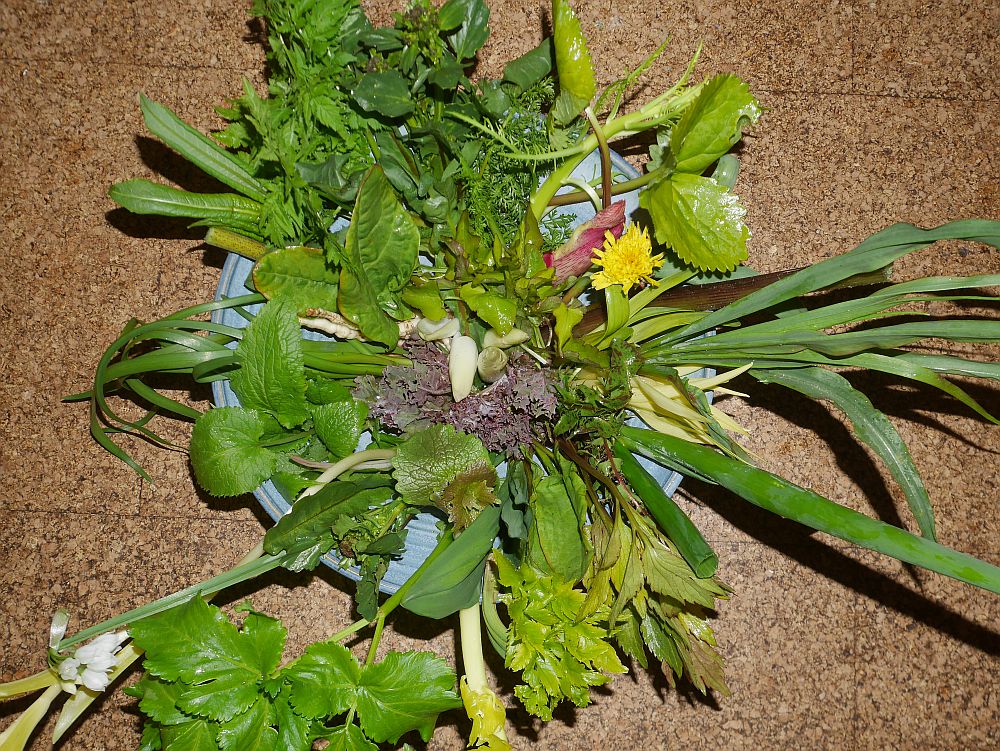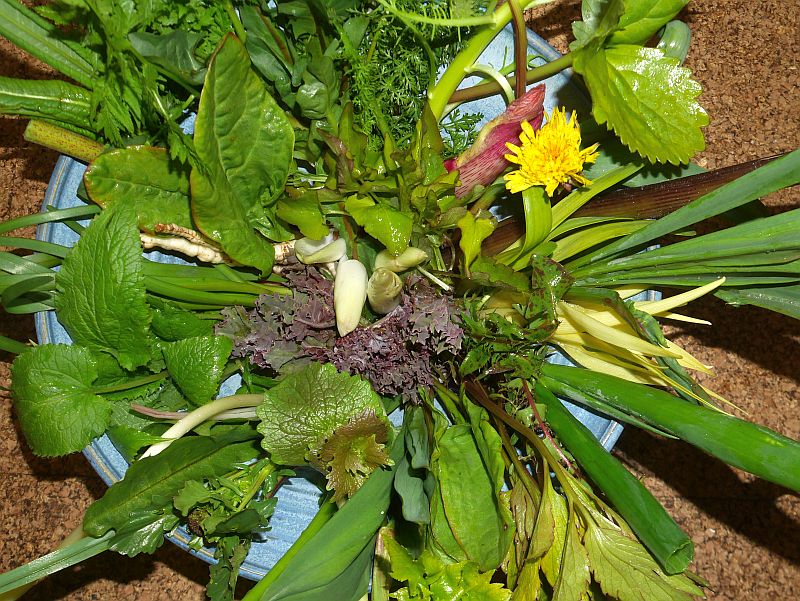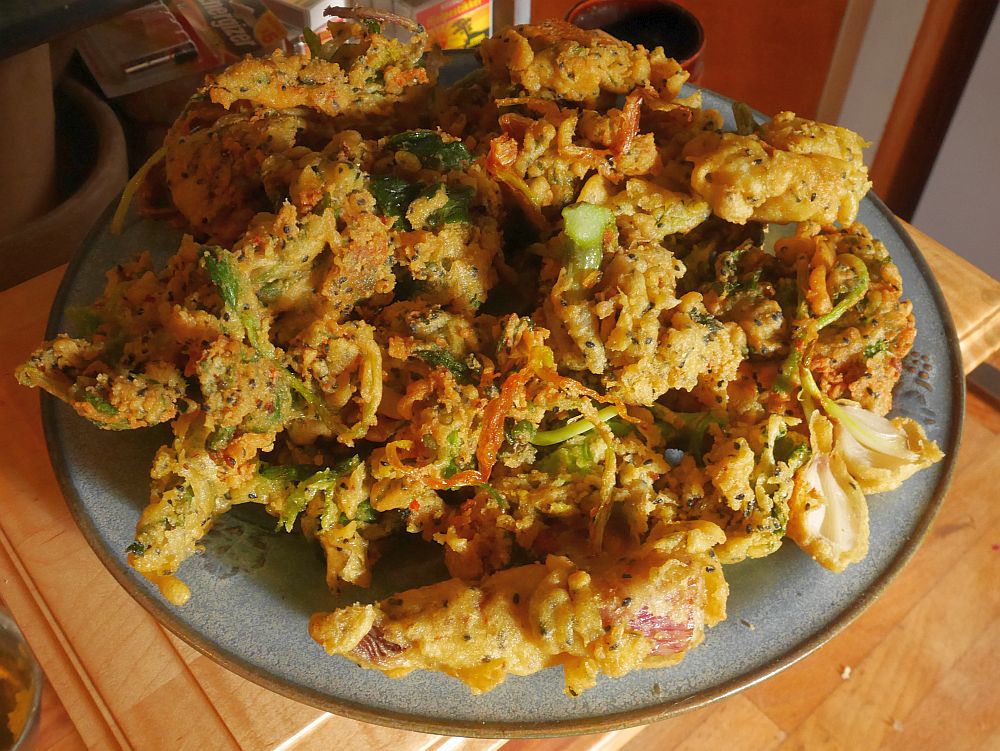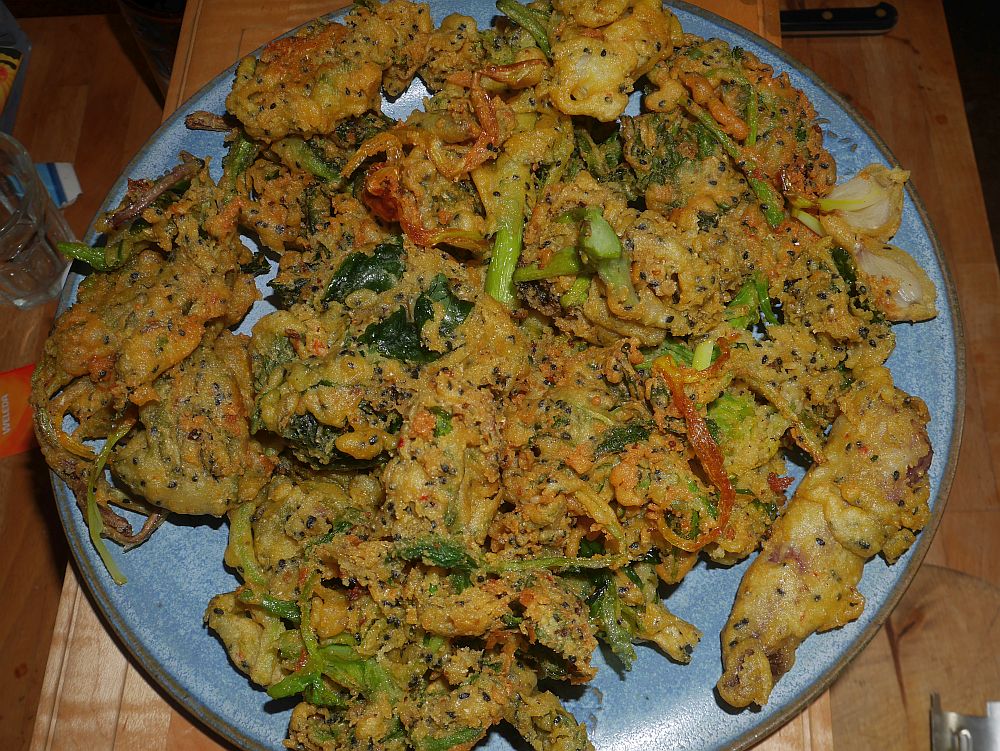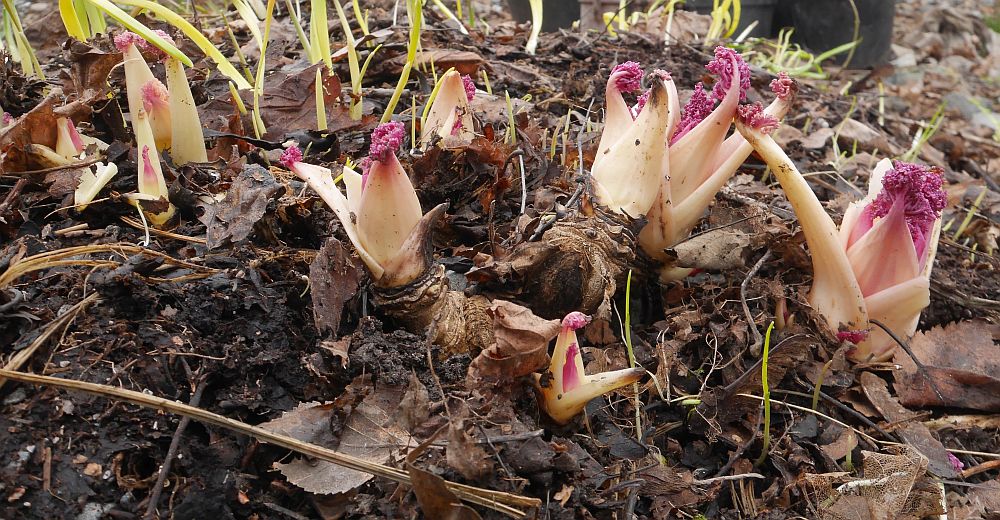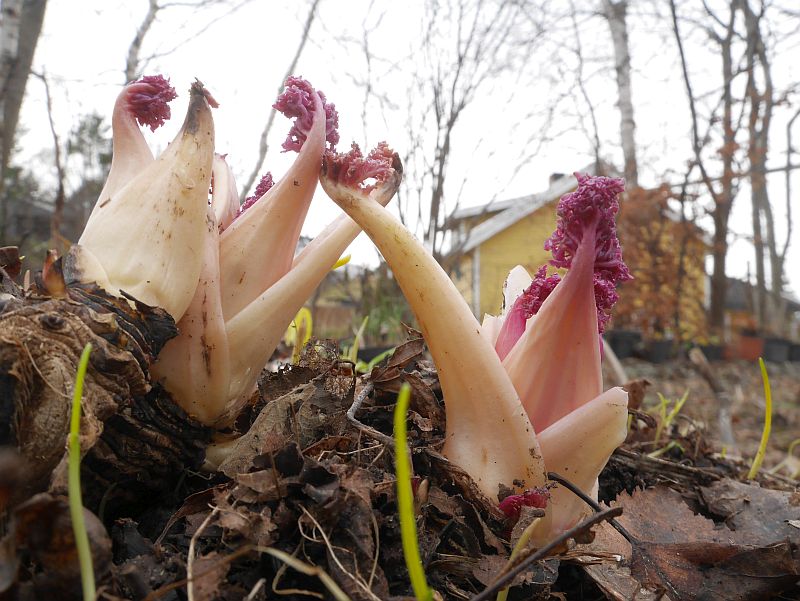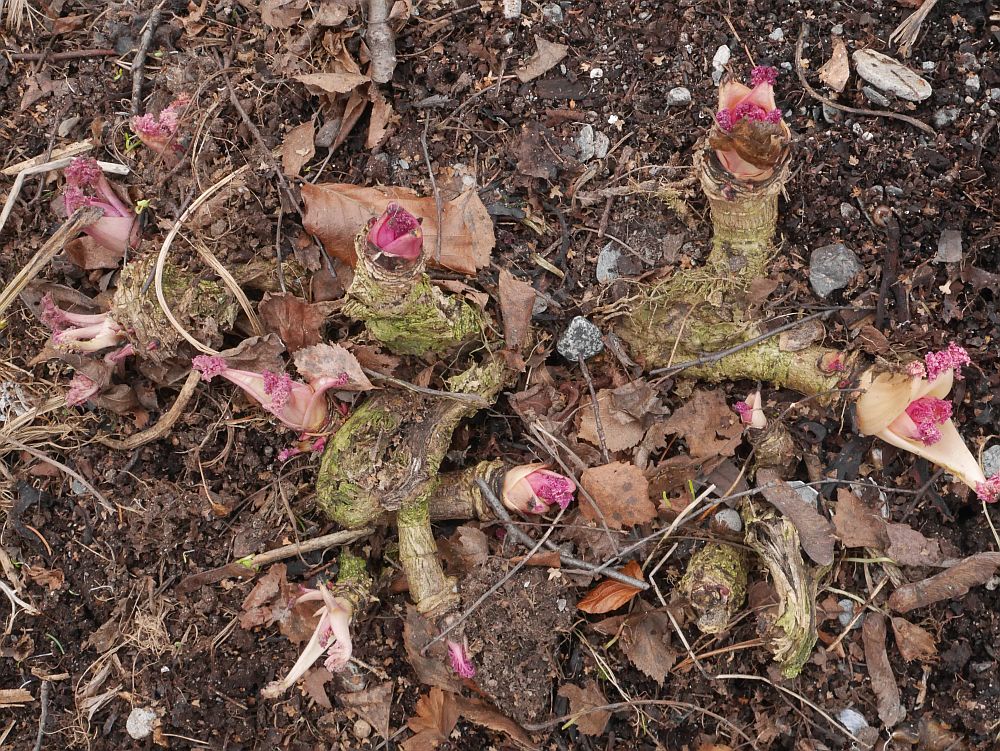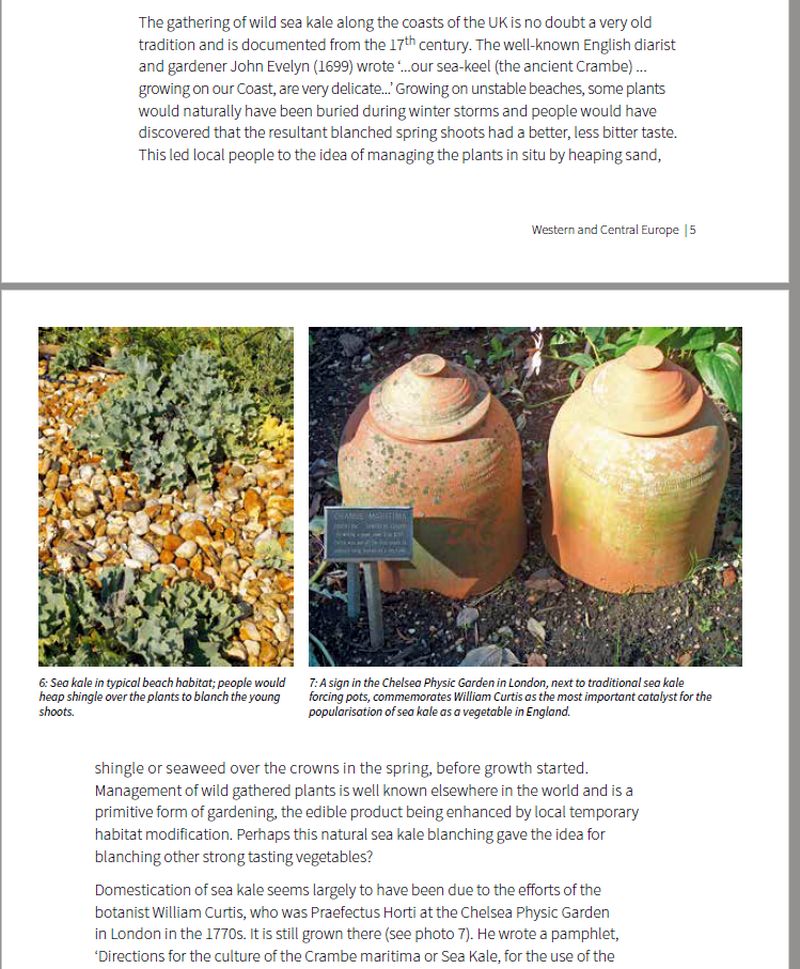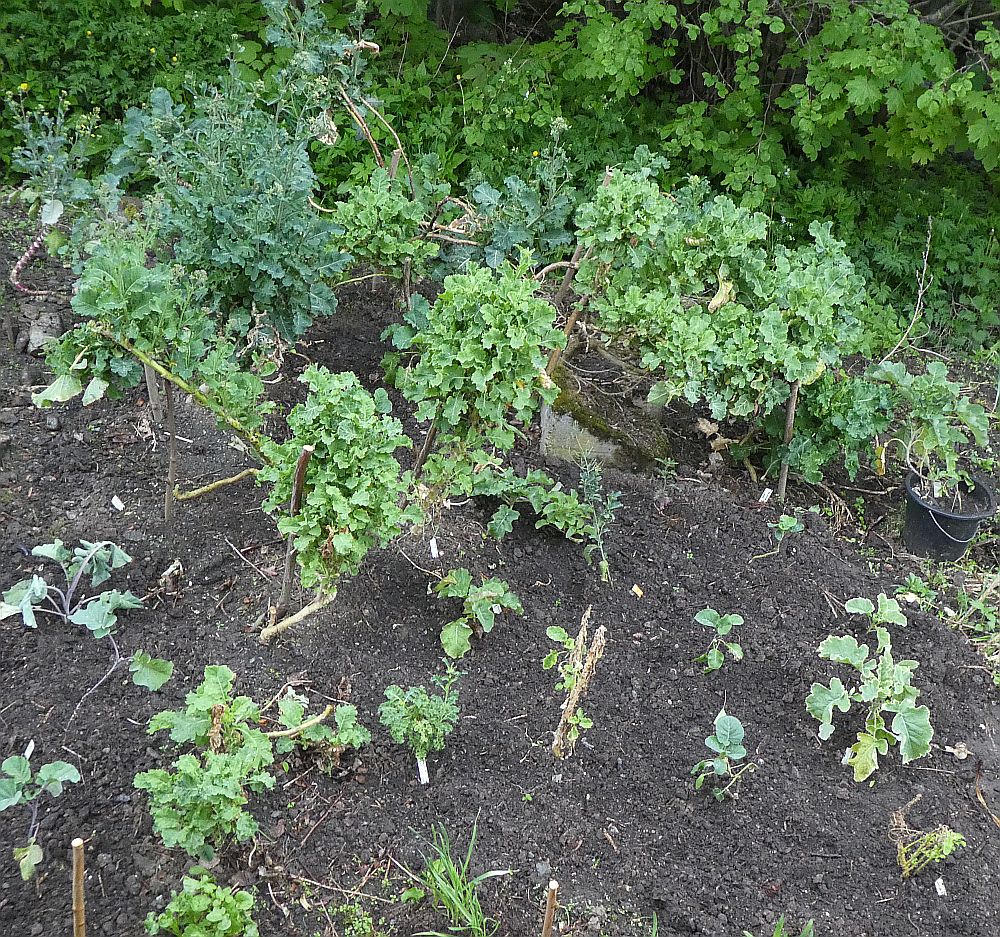Growing your own seed often has a positive impact on pollinating insects as here with a female orange tip butterfly (aurorasommerfugl) sitting on flowers of mustard greens / sennepsalat “Giant Red” (Brassica juncea). Eggs of orange tip (Anthocharis cardamines) are always deposited on inflorescences of crucifers like this one (I had seen both male and female early the same day in the same area).
Category Archives: Brassica
Winter protecting my perennial kales
Kales (Brassica oleracea) have a reputation for being really hardy, but in reality there are many perennial vegetables that are far more hardy. I mean, kales don’t really make much effort to protect themselves, remaining green all winter and in a normal winter here all my kales would die. However, in areas with mild winters, they are useful as they can be harvested all winter outside. Most perennials die back to the roots and reshoot in spring. Sea kale (Crambe maritima) is one example of this and is thus easier to overwinter. A dream of the perennial kale breeder is a variety that is capable of reshooting from the roots or at least from low down on the plant.
The last couple of winters have been very mild with hardly any frost all winter and almost all my kales have survived (the exception being less hardy Tree collards from California). This winter has been significantly colder and the air temperature has only been above zero C since New Year for a short period. I was prepared for this and spread a thick layer of leaves around the roots to stop the soil freezing around the roots with either jute, spruce branches or planks over to stop the leaves blowing away in winter storms.
In addition, I always take cuttings which I overwinter in a cold room in the house. Almost 100% of cuttings are successful.
Biological control
I registered 3 great tit (kjøttmeis) territories and 1 blue tit (blåmeis) pair in the garden this year and both have raised young. One of the young great tits has been picking off diamond back moth (kålmøll) larvae on flowering radish plants on the balcony as you can see in the video:
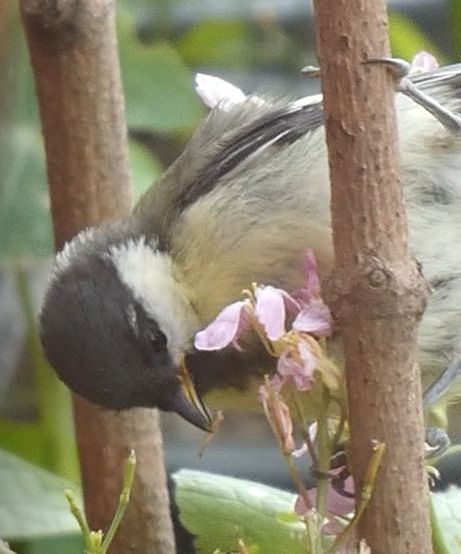
More perennial kales
The perennial kales overwintered well the last two winters and are looking good. I showed a video of one I got from Walsall Allotments in Birmingham, UK a few years ago here last week: https://www.edimentals.com/blog/?p=25787
The first below is one of Chris Homanics’ perennial crosses (I lost track of which cross this is). It has large dark glossy leaves (a bit reminiscent of Glazed collards) and hasn’t flowered, concentrating instead its energy into producing leaves! This is a keeper.
This is followed by non-flowering offspring of my Daubenton cross with Purple Sprouting Broccoli in 2012 and still alive https://www.edimentals.com/blog/?page_id=1632. These have inherited the daubenton genes but one is taller and has bigger leaves. I’m still playing with the offspring on the broccoli side, but they are less perennial but some have survived for 5 years but the broccolis are smaller than the father, but still useful.
Finally is a current picture of Daubenton variegated.
AND Diamond back moth (kålmøll) is now here in large numbers (over 100) and will have almost no impact on these kales, nor will other pests!
1. Homanics Norway perennial kale
2. Daubenton like (from Daubenton x Late Purple Broccoli cross)
3. Daubenton variegated 
Sustainable kales
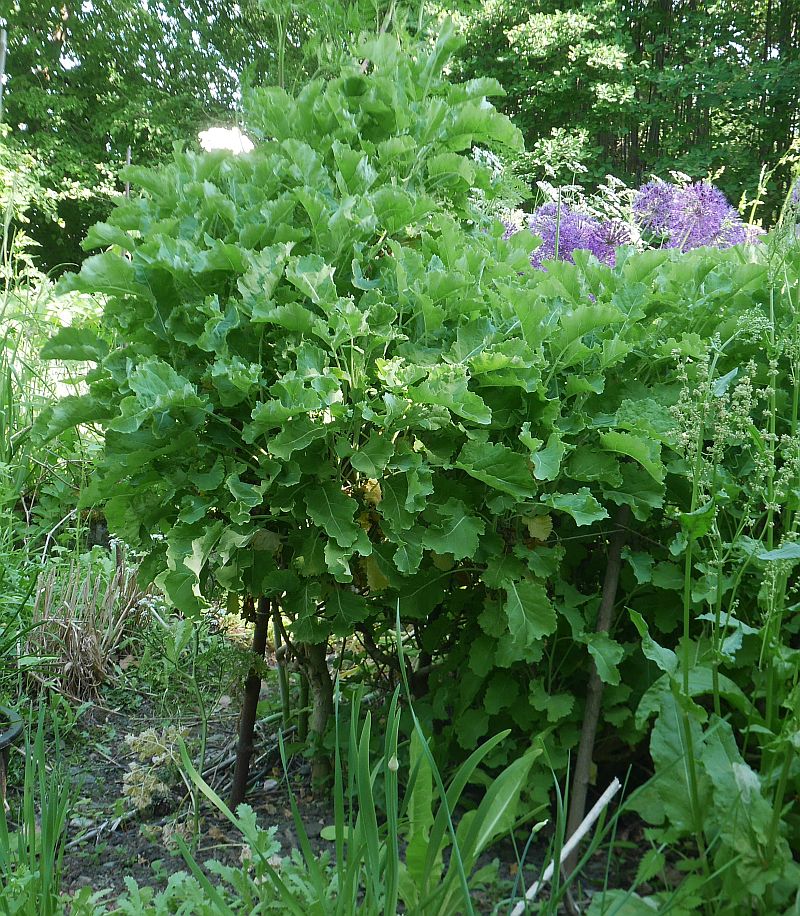
A few days ago the plague of Brassica growers, diamond back moth (kålmøll) arrived in significant numbers here and I see on various FB groups that folk are using floating mulch and enviromesh to protect their crops. I had done the same for years, but decided that I wanted to grow vegetables without non-sustainable oil based products like Agryl fleece which is no doubt also a major source of plastic fibres in nature. Agryl is also used to bring on annual crops earlier. However, there is an alternative plastic free and sustainable alternative using perennials. As you can see, my kales having grown for two and a half months are large and have been providing kale leaves since early spring. Their main growth period is now over but will be resumed in autumn. Although diamond back moths and other butterflies lay their eggs on these kales damage isn’t significant. Therefore I am totally unworried by this invasion of moths!
A 65 Veggie Pakora at 65
To celebrate my 65th we made indian pakora with 65 (or so) different perennial vegetables. Going for a new title, this time EPM (Extreme Pakora Man)! Any better? The whole list is under the pictures!
Just wish I’d had broad / fava bean (bondebønner) flour available for the pakoras rather than gram flour (chick peas)…next time I hope :)
Begonia heracleifolia var nigricans (leaf petiole)
Cilantro / Bladkoriander
Dill
Oxalis triangularis (two varieties)
Gynostemma pentaphyllum (sweet tea vine)
Crithmum maritimum (rock samphire / sanktpeterskjerm)
Parsley / persille
Garlic / Hvitløk “Valdres”
Garlic / Hvitløk “Lochiel”
Garlic / Hvitløk (sprouts)
Chenopodium ambrosioides (epazote / sitronmelde)
Chrysanthemum coronarium “Chopsuey Greens”
Perennial kale / flerærige kål “Heligoland”
Perennial kale / flerærige kål “Daubenton Variegated”
Urtica dioica (nettle / nesle)
Hablitzia tamnoides (Caucasian spinach / stjernemelde)
Allium ursinum (ramsons / ramsløk)
Hydrophyllum virginianum (Virginia waterleaf, Indian salad)
Primula elatior (oxlip / hagenøkleblom)
Primula “Sunset shades”
Rhubarb / rabarbra “Victoria”
Rhubarb / rabarbra “Træna”
Allium fistulosum (Welsh onion / pipeløk)
Allium cernuum (Chicago onion, nodding onion / prærieløk)
Myrrhis odorata (sweet cicely / Spansk kjørvel)
Sium sisarum (skirret / sukkerrot)
Heracleum sphondylium (common hogweed / kystbjørnekjeks)
Allium scorodoprasum (sand leek / bendelløk, skogløk)
Taraxacum officinale (dandelion / løvetann) (leaves, roots and flowers)
Matteuccia struthiopteris (ostrich fern / strutseving)
Houttuynia cordata “Chinese Market”
Allium carolinianum
Allium schoenoprasum (chives / gressløk)
Rheum palmatum var tanguticum (Turkey rhubarb/ prydrabarbra)
Bistorta officinalis (bistort / ormerot)
Allium x proliferum (walking onion / luftløk) “Amish Topset”
Campanula latifolia (giant bellflower / storklokke)
Aegopodium podograria (ground elder / skvallerkål)
Carum carvi (caraway / karve) (leaves)
Aralia cordata (udo) (short blanched shoot)
Crambe maritima (sea kale / strandkål)
Allium douglasii (Douglas’ onion / Douglas-løk)
Allium nutans (Siberian nodding onion / sibirsk nikkeløk)
Hemerocallis spp. (day lily / daglilje)
Allium victorialis (victory onion / seiersløk) “Lofoten”
Rumex acetosa (sorrel / engsyre)
Levisticum officinale (lovage / løpstikke) (blanched)
Smilacina racemosa ( false spikenard / toppkonvall) “Emily Moody” (blanched)
Hosta “Frances Williams”
Tragopogon pratensis (Jack-go-to-bed-by-noon / geitskjegg)
Barbarea vulgaris ssp arcuata (winter yellowcress / vinterkarse)
Barbarea vulgaris ssp vulgaris (winter yellowcress / vinterkarse)
Allium paradoxum var normale (few-flowered leek)
Angelica archangelica ssp archangelica v. Majorum (Angelica / kvann) “Vossakvann”
Dystaenia takesimana (Ulleung giant celery)
Alliaria petiolata (garlic mustard / løkurt)
Rudbeckia lacinata (Cherokee greens)
Armoracia rusticana (horseradish / pepperrot) (blanched greens)
Rumex patientia (patience dock / hagesyre)
Allium pskemense
Taraxacum sublaciniosum “Delikatess” (dandelion / løvetann) “Moss-leaved dandelion”
Taraxacum albidum
Phyteuma nigra (black rampion / svartvadderot) (greens)
(Golpar was in the pakora batter along with chili, ajwain and black onion seed, Nigella)
An Aristocratic Vegetable
Sea kale Crambe maritima is sometimes referred to as the King of the Vegetables (Queen is perhaps more fitting!) . This is partly due to the fact that it was in the past cultivated in heated greenhouses for nobility in the UK for Christmas! Maybe not the King, it is certainly an aristocrat and the easiest perennial brassica in cold climates (along wtih even hardier Crambe cordifolia) as it is hardier than perennial kales as it resprouts from the roots every spring and can easily be covered by a mulch of leaves or suchlike in colder climates. I do this every autumn just in case we have a very cold winter (I have experienced plants to resprout from deep roots when the surface roots have been killed in winter). I would normally take off the leaf mulch early April, but this winter it’s been so mild I removed it a few days ago and the plant had already put out delicious sprouts…I’ve been snacking on them! My oldest sea kale is approaching 40 years old, but hasn’t appeared yet (oldies sleep longer I guess!). Much more about Sea Kale in my book Around the World in 80 plants or by searching here: https://www.edimentals.com/blog/?s=sea+kale
They are also beautiful. The pictures show the cultivar Lily White which is only about 8 years old.
Lily White in flower
Diamondbacks in their thousands
There were more than a thousand moths in my garden yesterday and they were observed swarming over my perennial kales (Brassica oleracea), sea kale (Crambe maritima) and common wintercress (Barbarea vulgaris), none of which are likely to be severely affected.
Diamondbacks are back :(
Sea kale/strandkål (Crambe maritima):
Perennial kales (Brassica oleracea):

